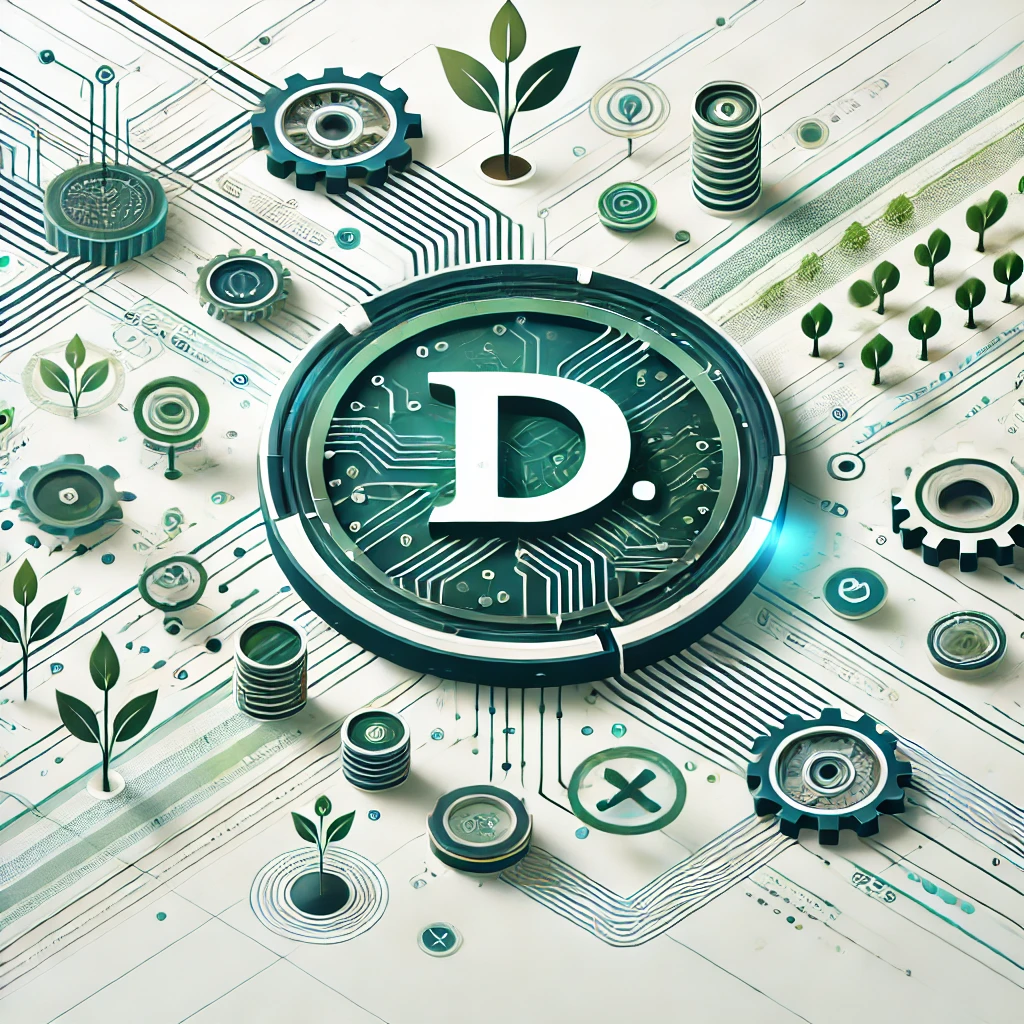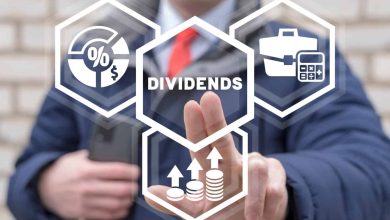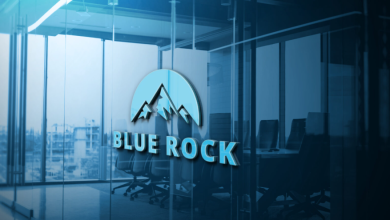The Future of Farming: A Dive into d.farm

The agricultural sector, often viewed as steeped in tradition, has long been resistant to change. Yet, the rapidly advancing digital age has begun to challenge this perception, with technology offering promising solutions to age-old challenges in farming. One such revolutionary innovation is d.Farm — a digital agriculture platform that seamlessly integrates advanced technologies to bring the power of automation, data, and precision to the farming industry. This marriage of the digital world with the age-old practice of farming promises to make agriculture smarter, more sustainable, and ultimately more resilient to the challenges we face today.
In this article, we’ll explore the future of farming through the lens of d.farm, examining how it’s transforming the industry and why it represents the next step in sustainable agriculture.
What is d.farm?
d.farm is a comprehensive digital platform that combines the latest in Internet of Things (IoT), Artificial Intelligence (AI), machine learning, and blockchain technology to enhance farm management. With the agricultural industry often facing challenges such as fluctuating weather patterns, soil degradation, pest invasions, and inefficient resource management, d.farm offers a technology-driven solution designed to meet these hurdles head-on.
At its heart, d.farm helps farmers collect, analyze, and leverage data to improve crop productivity, reduce waste, and ultimately make more informed decisions. The platform provides users with real-time information on soil health, weather, crop conditions, and more, all accessible from a smartphone or computer.
But d.farm isn’t just a tool for increasing yield and minimizing risk — it’s also a vision for the future, one where agriculture is integrated with technology to become a smarter, more sustainable endeavor that can better feed the growing global population.
How d.farm Works: The Technology Behind the Revolution
While the idea of technology-driven farming may sound futuristic, platforms like d.farm already apply some of the most cutting-edge technology available to make agriculture more efficient. Here’s how it all works.
IoT Sensors and Monitoring
The cornerstone of d.farm is its sensor network, which helps monitor the health of crops, soil, and the surrounding environment. IoT (Internet of Things) sensors collect an abundance of real-time data, including moisture levels, soil pH, temperature, and weather patterns, among other metrics. This data is continuously sent to a cloud-based platform where it can be accessed by farmers.
Rather than guessing the moisture level or waiting for visual cues of plant stress, d.farm’s sensors provide actionable insights that allow farmers to take the right actions before potential problems escalate. For example, if the sensors detect a soil moisture level below ideal conditions, the system will prompt a recommendation for irrigation or other corrective actions.
AI and Machine Learning for Predictive Analysis
AI and machine learning are used extensively on the d.farm platform to analyze the data coming in from the sensors and other inputs. These technologies can process complex datasets and identify patterns that are not immediately obvious to the human eye.
By analyzing historical data, AI can predict future crop outcomes, ideal planting times, pest invasions, or even market conditions. This ability to foresee potential challenges allows farmers to make proactive decisions rather than merely responding to events after the fact. For instance, AI-powered recommendations may inform farmers about optimal fertilization schedules, irrigation plans, and pest management tactics — all tailored to a specific region’s growing conditions.
AI also enables farmers to scale their operations more effectively. With the use of data, farms can optimize their processes for maximum efficiency, regardless of their size or scope, ultimately benefiting both small-scale family farms and large commercial operations.
Blockchain for Transparency and Sustainability
Another cutting-edge aspect of d.farm is its use of blockchain technology. In an age when consumers are increasingly concerned with the sustainability of their food sources, transparency has become a critical factor in food purchasing decisions. Blockchain technology provides a decentralized, secure system where data is stored in an immutable ledger. Every step in the production process — from seed planting to harvest and beyond — can be logged, creating a transparent record of the farm’s practices and activities.
Not only does this transparency build consumer trust, but it also ensures that farms are following sustainable practices. D.farm integrates sustainability by helping farmers monitor the use of resources such as water and fertilizers, thus reducing waste and minimizing their environmental impact.
Benefits of d.farm: Why It’s the Future of Agriculture
Now that we understand how d.farm works, it’s clear that the integration of technology into farming holds immense benefits. Here are some of the key advantages that d.farm and similar platforms offer to farmers, the environment, and society at large:
1. Increased Efficiency and Reduced Costs
Farmers are under constant pressure to reduce costs while improving productivity. D.farm’s precision farming capabilities allow them to do just that. By tracking soil and weather conditions in real time, farmers can optimize irrigation, apply the right amounts of fertilizer, and prevent the unnecessary use of pesticides. Not only does this reduce costs, but it also conserves resources, thus allowing farmers to increase profitability without negatively impacting the environment.
2. Optimized Crop Management
With predictive analytics, farmers are equipped with tools to make better decisions. From selecting the ideal time to plant, to choosing the best varieties of crops for particular soil types and conditions, AI-powered insights make crop management more efficient and profitable. This smart management also ensures that crops grow more uniformly and are less vulnerable to pests, diseases, and extreme weather conditions.
3. Sustainability
The most critical challenge facing the agriculture sector today is sustainability. From overuse of water resources to reliance on chemical pesticides and fertilizers, traditional farming practices can harm both the land and the environment. D.farm addresses these concerns by helping farmers reduce waste, increase resource efficiency, and adopt environmentally friendly farming practices that maintain long-term productivity without harming the environment.
4. Real-Time Decision Making
Real-time monitoring combined with AI-led analysis means farmers can act promptly when faced with issues. Whether it’s a sudden drought or an insect infestation, d.farm provides alerts and recommendations so farmers can address issues before they become insurmountable. This agility is vital in an era where farming is being affected by increasingly unpredictable climate events.
5. Market Adaptability and Transparency
Thanks to blockchain technology, d.farm can trace products all the way through the supply chain, offering a transparent record of where and how products were grown. This traceability is a major selling point for consumers who are becoming more conscious about sustainability and the ethical implications of their food choices. Transparency not only drives consumer trust but also opens up opportunities for new market access.
The Road Ahead: Scaling the Digital Agriculture Revolution
The agriculture sector is evolving, and d.farm is at the forefront of that transformation. With its combination of data-driven insights, precision farming, and cutting-edge technologies, d.farm provides a glimpse of the future — one in which farming practices are more efficient, sustainable, and adaptable to the changing needs of a growing world.
As the global population continues to grow and environmental concerns become more pressing, the importance of digital tools like d.farm becomes even clearer. Agriculture must evolve if we are to feed the planet in a way that is both profitable and sustainable.
Looking ahead, d.Farm holds enormous promise for revolutionizing farming as we know it. As technology continues to mature and become more accessible, its potential to empower farmers and protect the environment is boundless. The future of farming is digital — and it’s already happening.








